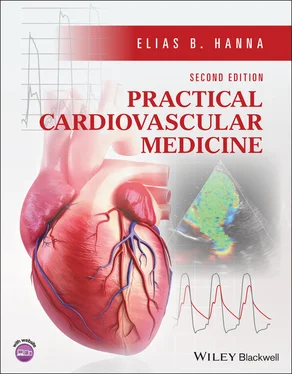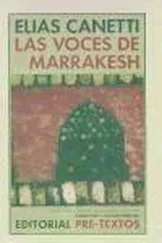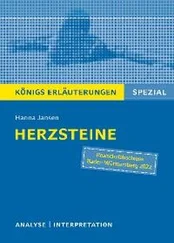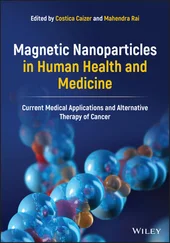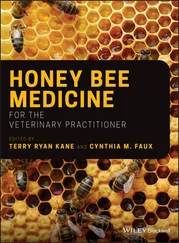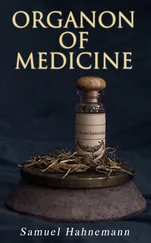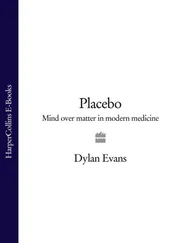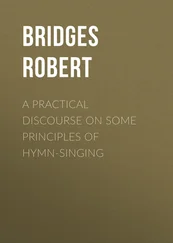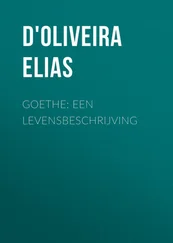1 Cover
2 Title Page Practical Cardiovascular Medicine Second Edition Elias B. Hanna, MD, FACC Associate Professor of Medicine Division of Cardiovascular Medicine Division of Interventional Cardiology University of Iowa School of Medicine Iowa City, Iowa, USA
3 Copyright Page
4 Dedication Page
5 Preface
6 Abbreviations
7 About the Companion Website
8 Part 1: CORONARY ARTERY DISEASE 1 Non-ST-Segment Elevation Acute Coronary Syndrome Appendix 1. Complex angiographic disease- Moderate disease progression Appendix 2. Women and ACS, elderly patients and ACS, CKD Appendix 3. Bleeding, transfusion, patients on chronic warfarin or NOAC, gastrointestinal bleed Appendix 4. Antiplatelet and anticoagulant therapy Appendix 5. Difference between plaque rupture and plaque erosion Appendix 6. Spontaneous coronary artery dissection Appendix 7. Harmful effects of NSAIDs and cyclooxygenase-2 inhibitors in CAD Appendix 8. Additional ideas on the physiology of hs-troponin-Role of hs-troponin in primary prevention QUESTIONS AND ANSWERS References 2 ST-Segment Elevation Myocardial Infarction 1. DEFINITION, REPERFUSION, AND GENERAL MANAGEMENT 2. STEMI COMPLICATIONS Appendix 1. Out-of-hospital cardiac arrest: role of early coronary angiography and therapeutic hypothermia QUESTIONS AND ANSWERS References Other acute therapies Early discharge Prognosis ICD Shock (+ SHOCK trial and CULPRIT-SHOCK trial, references 69 and 73) RV shock (+ reference 89 above) Mechanical complications Arrhythmias Aneurysm and pseudo-aneurysm Post-MI pericarditis LV thrombus Prognosis Cardiac arrest Note 3 Stable Ischemic Heart Disease and Approach to Chronic Chest Pain Appendix 1. Notes on various surgical grafts Appendix 2. Coronary vasospasm (variant angina, Prinzmetal angina) Appendix 3. Microvascular endothelial dysfunction Appendix 4. Women with chest pain and normal coronary arteries Appendix 5. Diagnostic strategy for ischemia with non-obstructed coronary arteries (INOCA) Appendix 6. Myocardial bridging Appendix 7. Coronary collaterals, chronic total occlusion Appendix 8. Hibernation, stunning, ischemic preconditioning QUESTIONS AND ANSWERS References
9 Part 2: HEART FAILURE (CHRONIC AND ACUTE HEART FAILURE, SPECIFIC CARDIOMYOPATHIES, AND PATHOPHYSIOLOGY) 4 Heart Failure DEFINITION, TYPES, CAUSES, AND DIAGNOSIS OF HEART FAILURE1. DEFINITION AND TYPES OF HEART FAILURE I. Heart failure is diagnosed clinically, not by echocardiography II. After HF is defined clinically, echocardiography is used to differentiate the three major types of HF 2. CAUSES OF HEART FAILUREI. Systolic HF or HF with reduced EF (HFrEF) II. HF with preserved EF (HFpEF) III. Right HF 3. DIAGNOSTIC TESTSI. Echocardiography II. BNP III. ECG IV. Coronary angiography and other ischemic tests V. Diastolic stress testing VI. Endomyocardial biopsy VII. Cardiac MRI CHRONIC TREATMENT OF HEART FAILURE1. TREATMENT OF SYSTOLIC HEART FAILURE I. Treat the underlying etiology: target BP and CAD II. Value of revascularization in ischemic cardiomyopathy: STICH trial III. Role of viability testing and ischemic testing IV. Drugs that affect survival in EF<40% V. Specifics of drugs that affect survival VI. Drugs that improve symptoms and morbidity VII. Devices VIII. Other therapeutic measures IX. Prognosis 2. TREATMENT OF HFPEF ACUTE HEART FAILURE AND ACUTELY DECOMPENSATED HEART FAILURE I. Triggers of acute decompensation II. Profiles of acute HF: congestion without low cardiac output, congestion with low cardiac output III. Treatment of acute HF: diagnosis and treatment of triggers IV. Treatment of acute HF: diuretics, cardiorenal syndrome, aggressive decongestion, ultrafiltration V. Treatment of acute HF: vasodilators VI. Treatment of acute HF: IV inotropic agents VII. In-hospital and pre-discharge use of ACE-I/ARB, angiotensin-neprilysin inhibition, and β-blockers VIII. Treatment of acute HF: O 2, non-invasive ventilatory support (CPAP, BiPAP), intubation IX. Summary: keys to the treatment of acute HF (Table 4.2) X. Discharge XI. Inability of severe HF to tolerate vasodilatation or hemodialysis XII. Outpatient monitoring of HF and prevention of hospitalization Appendix 1. Management of isolated or predominant RV failure QUESTIONS AND ANSWERS References Diuretics 5 Additional Heart Failure Topics 1. SPECIFIC CARDIOMYOPATHIES 2. ADVANCED HEART FAILURE: HEART TRANSPLANT AND VENTRICULAR ASSIST DEVICES (VADs) 3. PATHOPHYSIOLOGY OF HEART FAILURE AND HEMODYNAMIC ASPECTS QUESTIONS AND ANSWERS References
10 Part 3: VALVULAR DISORDERS 6 Valvular Disorders 1. MITRAL REGURGITATION 2. MITRAL STENOSIS 3. AORTIC INSUFFICIENCY 4. AORTIC STENOSIS 5. TRICUSPID REGURGITATION AND STENOSIS 6. PULMONIC STENOSIS AND REGURGITATION 7. MIXED VALVULAR DISEASE; RADIATION HEART DISEASE 8. PROSTHETIC VALVES 9. AUSCULTATION AND SUMMARY IDEAS QUESTIONS AND ANSWERS References
11 Part 4: HYPERTROPHIC CARDIOMYOPATHY 7 Hypertrophic Cardiomyopathy QUESTIONS AND ANSWERS References
12 Part 5: ARRHYTHMIAS AND ELECTROPHYSIOLOGY 8 Approach to Narrow and Wide QRS Complex Tachyarrhythmias Further reading 9 Ventricular Arrhythmias QUESTIONS AND ANSWERS References 10 Atrial Fibrillation I. Predisposing factors (see Table 10.1) II. Types of AF III. General therapy of AF IV. Management of a patient who presents with acute, symptomatic AF V. Peri-cardioversion anticoagulation management VI. Antiarrhythmic management after the acute presentation VII. Decisions about long-term anticoagulation, role of clopidogrel, role of triple therapy VIII. Special situation: atrial fibrillation and heart failure. Optimal heart rate in heart failure IX. Special situation: atrial fibrillation with borderline blood pressure or non-AF-related hypotension X. AF burden as a correlate and a driver of HF progression Appendix 1. Optimal heart rate and AF rate for optimal cardiac output Appendix 2. Antiarrhythmic drug therapy Appendix 3. Catheter ablation of atrial fibrillation, surgical ablation, AV nodal ablation Appendix 4. INR follow-up in patients receiving warfarin-Non-vitamin K oral anticoagulants Appendix 5. Bridging anticoagulation in patients undergoing procedures Appendix 6. Management of elevated INR values Appendix 7. Left atrial appendage surgical and percutaneous closure Appendix 8. A common situation: AF and symptomatic pauses or bradycardia Appendix 9. DC cardioversion in patients with a slow ventricular response Appendix 10. AF occurring post-cardiac surgery and AF related to acute transient triggers Appendix 11. Brief asymptomatic runs of AF on device interrogation and association with stroke. Role of rhythm monitoring after cryptogenic stroke QUESTIONS AND ANSWERS References 11 Atrial Flutter and Atrial Tachycardia I. Atrial flutter II. Focal atrial tachycardia III. Multifocal atrial tachycardia (MAT) (or chaotic atrial tachycardia) IV. Ectopic atrial rhythm QUESTIONS AND ANSWERS References Further reading 12 Atrioventricular Nodal Reentrant Tachycardia, Atrioventricular Reciprocating Tachycardia, Wolff–Parkinson–White Syndrome, and Junctional Rhythms QUESTIONS AND ANSWERS Further reading 13 Bradyarrhythmias QUESTIONS AND ANSWERS References 14 Permanent Pacemaker and Implantable Cardioverter Defibrillator Appendix. Cases of PM troubleshooting QUESTIONS AND ANSWERS References Note 15 Basic Electrophysiologic Study I. General concepts; intracardiac electrograms II. AV conduction abnormalities III. Sinus node assessment IV. Ventricular vs. supraventricular tachycardia V. Dual AV nodal pathways VI. AVNRT VII. Accessory pathway, orthodromic AVRT, antidromic AVRT VIII. Atrial flutter IX. Inducible VT X. Mapping for ablation XI. EP electro-anatomical mapping Further reading 16 Action Potential Features and Propagation I. Action potential (see Figures 16.1, 16.2)II. Action potential propagation and mechanisms of arrhythmias III. General mechanism of action of antiarrhythmic agents IV. Modulated receptor hypothesis and use dependence V. Concept of concealed conduction VI. Specific examples of drugs (see also Chapter 10) VII. Amiodarone toxicity VIII. Effect on pacing thresholds and defibrillation thresholds Further reading
Читать дальше
